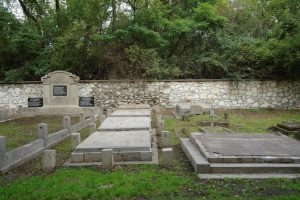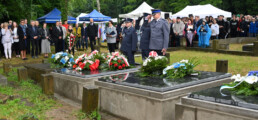The Jewish Intelligencia Mass Grave
by WIESŁAW PASZKOWSKI, Częstochowa Municipal Museum, History Documentation Centre
Edited: ALON GOLDMAN, Chairman of the Association of Częstochowa Jews in Israel English translation: ANDREW RAJCHER
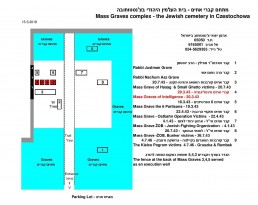
The events which took place in Częstochowa during Purim 1943 and, on the next day, in other places in the Radomsk district, later found their counterpart in the affair concerning the Hotel Polski in Warsaw. Perhaps, initially, it was a real attempt at exchanging Jews for German prisoners held by the Allies, or for money and military supplies. In February 1943, or maybe even earlier, the Germans ordered the Częstochowa Judenrat to …
… register all Jews who had relatives in Palestine. Persistent rumours circulated that they were opening the possibility to leave (…). Almost everyone applied for registration. Whoever had no relatives there gave some a fictitious name and address. It was said that Jews would be exchanged for German citizens, who had been interned in the Middle East by the English and the French. Many thought that going to Palestine was the last resort. The credibility of the registrations was confirmed by the fact that the forms, provided by the Germans, contained many different headings including the exact name, kinship level and address of the relative. If there were many relatives, then they each had to be listed on the registration form. The Judenrat opened a real registration office run by several individuals The influx of registrants was huge. The whole affair was given the appearance of authenticity.
After two weeks, registrations were completed and all went quiet. Then it was 20th March 1943, the joyous Jewish festival of Purim.
When we left HASAG for the camp, the strange silence and peace struck me. There were no visible Schutzpolizei personnel, who usually stood at the gate and carried out random personal searches. The streets of the camp were deserted.
Unexpectedly, at 5:00 pm, the commander of the Schutzpolizei, Hauptmann Paul Degenhardt, appeared at the Judenrat office. He said that he would dictate the list of names of the first group to be going to Palestine. It would contain those who deserved it by means of their conduct. Degenhardt ordered the Jewish police to call all these individuals for registration. They were then led to the Rynek Warszawski, which adjoined the fence of the “Small Ghetto” and which served as an assembly point and a gathering place. The individuals summoned were those who held academic qualifications – doctors, lawyers and engineers, as well as members of the Judenrat and their families.
Degenhardt counted those assembled at the Rynek and, after confirming that there were more than one hundred and forty individuals, he called over the military police and ordered them to lock everyone into the nearby German guard-post. Shortly after, trucks arrived and the Jewish intelligencia were forcibly led out and, again with force, loaded onto the trucks.
According to a different version of events:
At some point, armed Germans from the Schutzpolizei emerged from the gate on ulica Warszawska. They surrounded the Jews assembled on the Rynek and rushed them towards the trucks, covered with tarpaulins, which were standing in the street. It was only then that the victims of this German hypocracy understood the terrible truth – but it was too late to back out. The butts of rifles came crushing down on them, beaten as they protested. Judenrat member, Zelig Rotbard, who persuaded his young daughter Fela to go with him to the Rynek, now pleaded with the German officers to, at least, let her go.
The cars moved along ulica Warszawska, turned into Mirowska and then into Olsztyńska – namely the route leading to the Jewish Cemetery, already known to Częstochowa Jews as a place of execution. It was then that Maurycy Kopiński, brother of the Judenrat chairman, told his nephew Władek Kopiński, sitting next to him, to escape. He also jumped out of the speeding truck. According to another version of the escape, it was Bernard Kurland who instigated it. The dentist, Dr Anna Bresler, also jumped off, which caused her to break a leg. But she managed to reach the home of one of her patients, who hid her. A dozen or so individuals escaped. Shots were fired at those escaping, but the trucks only stopped when they had reached the cemetery, near the shtiebel. There, all the victims were gathered and told to strip naked. They were then led in pairs to the already prepared grave where they were shot dead. In total, 127 individuals perished in this tragedy. Almost the entire list of people is named on the tombstone’s inscription.
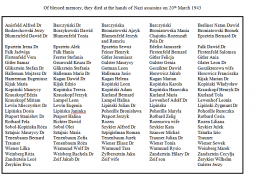
This plaque was the first to be destroyed. Then the quadruple tombstone became eroded, especially its two northern parts. However, in the first years of this century, the list of victims was still legible. However, due to the thoughtless restoration work by a private individual, the cracked pieces of concrete were removed and replaced with a new smooth, cement surface, without any inscriptions.
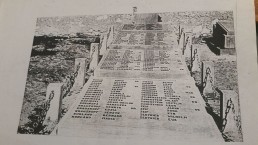
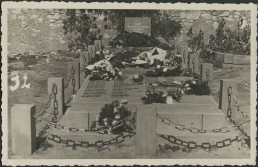
UPDATE: On Wednesday, 15th June 2023, a ceremony was held at the Częstochowa Jewish Cemetery to consecrate the restored three mass graves of the Jewish Intelligentsia.
Through the efforts of World Society Vice-President, Alon Goldman, and others, the Polish government recognised these burial sites as official “War Graves” and, therefore, they qualified for government funding to have them restored.
Following the completion of the restoration work, the ceremony was held to consecrate these sacred sites.

